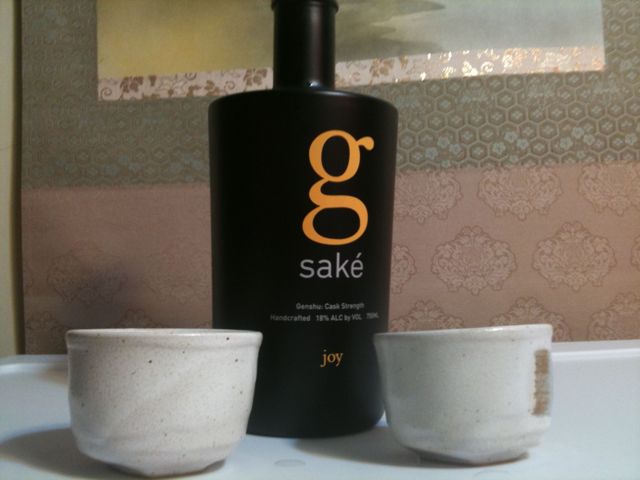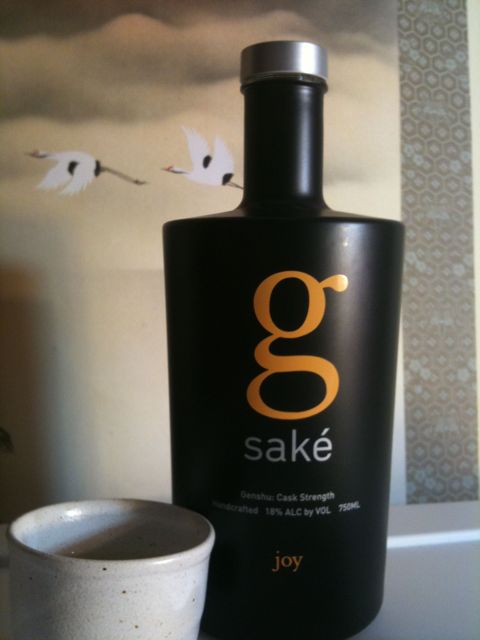G Joy
By Momokawa
Forest Grove, OR
From The Brewery:
STYLE : Junmai Ginjo Genshu: Made with only rice, water, yeast and koji with the rice milled to 60% of its original size. Aged ten months for extra body and depth of flavor. A hand crafted, special blend of three superior sakés selected by our tasting panel and blended to their specifications.
TASTING NOTES: Whether you are a saké purist or a looking for an incredible saké experience to set a standard for saké exploration this is the one for you. Full fruity nose with hints of spice give way to rich, creamy layers of ripe melon flavors with hints of pear and plum followed by a long, lingering tropical spice finish. A truly special Junmai Ginjo Genshu Saké.
PAIRING NOTES : “G” goes wonderfully with a wide range of Japanese cuisine including sushi and tempura but shift your perspective and think world cuisine, pacific fusion or even South American. Set a glass next to rosemary crusted lamb, grilled artichoke hearts and a selection of rich cheeses. Or, pair it up with chipotle spiced ribs, lime and chili black beans and tomato rice. “G” goes well around the world.
MILLING: Rice milled to: 60% of original grain.
FILTRATION: Roughly filtered for creamy finish.
SAKÉ METER VALUE(
SMV): +3
ABV: 18%
Tasting Notes:
Right up front, I am going to come out and say, that this is one of the 1st time I have had sake, so this is a new experience for me, and an enjoyable one at that. A friend invited my wife and I over to hang out, and when I got there, he had warmed up this sake for us; so my first take on this was a warmed version, then later we chilled the bottle for a cold tasting.
The warm sake was served in small ceramic sake cups, which did not give me a great view of the liquid inside, but it looked to be quite clear. The vapors coming off were pleasant, much like a white wine, with notes of alcohol and fruits; apple right up front. Taking a sip, I was surprised by the lack of flavor saturation based on the nose of the sake. There was still a good amount of character to enjoy, with bold esters of the apple returning, along with plum and raisins. It left an interesting drying finish – most likely from the high alcohol content – that was pleasant and light. It had a medium bodied mouthfeel (could be heavy for a sake though as I have not many experiences to use as a yardstick).
The colder version has a bit more weight to it, in mouthfeel and perception of alcohol in the taste, opposed to the warmed version which was more in the smell. Being cold, it was a little closer to wines I have tried, and a bit more enjoyable for me to consume.
I look forward to trying more sakes and other drinks from the Orient. If anyone has any suggestions for me to try, email me at pieratehole@gmail.com

